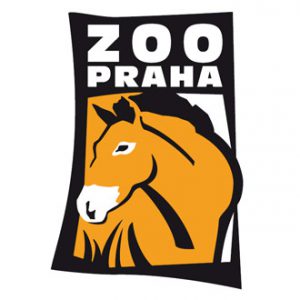Prague Zoo
By Tracy A. Burns
Introduction
At the Prague zoo, you can find a rainforest in Southeast Asia, an African village, a tropical forest in South America, the rocky coast of South America, and much, much more. With 10 pavilions, 150 expositions, and 5,000 animals, the zoo, with its 45 hectares or 111 acres, offers an enticing alternative to spending a day in the tourist-filled center around Old Town Square and Prague Castle.
 History
History
In 2008 the zoo was even voted the seventh-best in the world by Forbes’ Traveler magazine. The idea for founding a zoo dates as far back as the 19th century, but the zoo was not built until 1931 when wolf Lotta and lion Šárka became its first inhabitants. The zoo became noted for many “firsts.” In 1938 the zoo reared the first Andean vulture in the world. In 1942 it was the site where the first artificially bred polar bear opened its eyes for the first time. Then, in 2001, the first artificially bred Przewalski horse came into the world here, and the Prague zoo was for a time the biggest breeder of these horses in the world.
Floods in 2002
The zoo’s darkest days came in 2002 when many of its animals perished in the harsh floods. Seal Gaston swam all the way to Dresden but died while being transported back to Prague. Today visitors can see hippo Slávek, who lived through the natural catastrophe, in the pavilion of big mammals and terrarium.
Indonesian Jungle
Perhaps the most exciting exposition is the Indonesian Jungle, built between 2002 and 2004. The biggest pavilion for animals in the history of Czech zoos, it boasts two floors with a waterfall and a vast greenhouse displaying more than 1,000 animals. Forty species of fish and turtles call a tropical river home. Beware of the bats here: they fly freely. The pavilion shows off a pair of the biggest lizards in the world, the Komodo dragons, a family of orangutans, monkeys, turtles, apes, kangaroos, and birds. Overall 1,100 animals, including 60 species, live here.
Other pavilions
Slender and graceful giraffes dominate the African House and Savannah, also the home of zebras and ostriches. Asian lions, Sumatran tigers, cheetahs, and lizards can be seen in the pavilion of big cats and terrarium. Penguins have their own pavilion, too, on what resembles the rocky coast of South America. Don’t overlook the gharials, an endangered breed of crocodiles in their pavilion. Huge Galapagos tortoises and others from Seychelles are the highlights of another area. The biggest snakes in the world, the anacondas, are visible in the terrarium. Don’t miss the gorillas. There’s a family of six here, with two babies, one male, and one female. You do not have to travel to Madagascar to see lemurs, so distinctive with their striped tails. In the aviary watch the orange-headed thrush and fairy bluebird. Reindeer and moose occupy the pavilion of the northern forest which imitates coniferous woods and tundra. Wetlands and grassy islands are home to tapirs, antelopes, and flamingos, among others.
Children’s zoo
There’s also a children’s zoo with domestic animals, such as geese, sheep, and horses. A children’s trolley car is one means of transportation through the zoo. Educational activities take place here, too. Bus 112 from the “C” line at Holešovice Metro station takes visitors to the zoo’s entrance.



